A Promising Future For Katahdin Woods and Waters National Monument
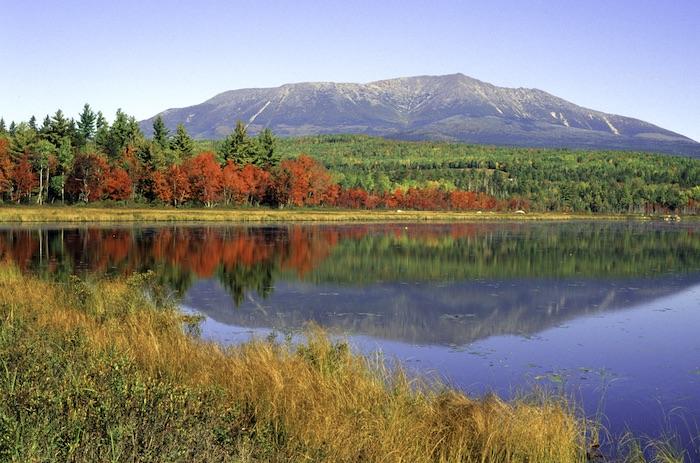
Mount Katahdin is ever-present from Katahdin Woods and Waters National Monument/George Wuerthner
Editor's note: Erika Zambello, a National Geographic Young Explorer, has spent time in all four seasons in the Maine North Woods landscape that now is Katahdin Woods and Waters National Monument. After the designation was bestowed, she caught up with Lucas St. Clair and discussed the immediate future of the new monument.
It was my last day in the Maine North Woods for my National Geographic Young Explorer grant. I paddled on Munsungen Lake, a headwater to the famous Aroostook River. The lake’s shoreline, rising from the water in sand and small rocks, bordered stands of young forest, including bright white birch trunks that stood out from the dark green shades of the surrounding woods. Here and there, a tall tree stood above the rest, perhaps a remnant of an older forest.

A freshwater mussel shell lies on the banks of the headwaters of the East Branch of the Penobscot River/Erika Zambello
The water was so clear that I could see at least 20 feet down, and in the shallows, the soft mud was peppered with the shells of freshwater mussels. In front of our bow, blue and green mountains rose above the edge of the lake, forming a beautiful vista that I could not stop photographing.
As we floated, I closed my eyes, feeling the warmth of the August sun and the light breeze forming tiny waves on the water. I wanted everyone to experience this moment.
Almost exactly a year ago, I embarked on a series of expeditions as a National Geographic Young Explorer, experiencing first-hand both recreational opportunities and conservation issues in the Maine North Woods in each of the four seasons. On my first trip, I stood within the 87,500 acres that have just become the Katahdin Woods and Waters National Monument. My fall expedition was focused on the headwaters of the East Branch of the Penobscot River, and I had followed the waterway from its emergence through a series of larger and larger ponds and lakes, until it eventually flowed through the new national monument. Though it was late September, much of the canopy remained green, casting dappled shade on the trails I followed near the river. Here and there flashes of crimson, or a golden leaf upon the path, announced the coming of the fall season.
It has taken years and years for the idea of the Katahdin Woods and Waters National Monument to become a reality. Lucas St. Clair, president of the board of Elliotsville Plantation, Inc. (which also funded my expeditions), has worked tirelessly towards this moment. “I’m really excited for [the people] and for me that I was able to help and contribute to a potential new era of life in the Katahdin region and be able to start helping diversify the economy," he told me.
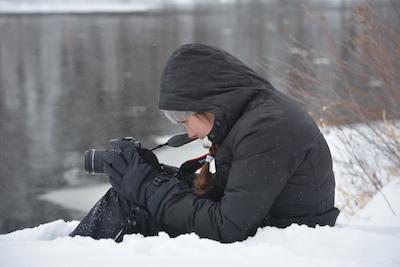
Erika Zambello, a National Geographic Young Explorer, has spent time in each of the four seasons in the landscape now protected as Katahdin Woods and Waters National Monument/Courtesy photo
Along the same vein, Lisa Pohlmann, executive director of the Natural Resources Council of Maine, noted that President Obama's designation of the monument through his authorities under The Antiquites Act “also was made possible by the leadership and vision of residents from across Maine, and particularly from the Katahdin region, who helped shape and support the monument proposal and worked tirelessly to make it a reality. At a time of economic hardship due to the closure of many paper mills in Maine, this new national monument will help boost and diversify the economy of the Katahdin region and provide new jobs and investment opportunities throughout Maine.”
The designation was not without contention. When I visited, signs opposing the national monument were common, and the decision will be both positive and negative news to people throughout Maine. Part of the concern over the designation stemmed from questions of access to the land, but St. Clair stressed that going forward “we’ve guaranteed the snowmobiling and hunting on the parcels that it’s already allowed, in perpetuity. It’s definitely going to be part of the monument, it will definitely be allowed still.”
However, the announcement from President Obama is not the end of work for St. Clair and other proponents, but only the beginning. Moving forward, St. Clair spoke of the need for a general management plan, and the arrival of a trail-building team within the next year or so to build “onto the system of trails that’s already there.”
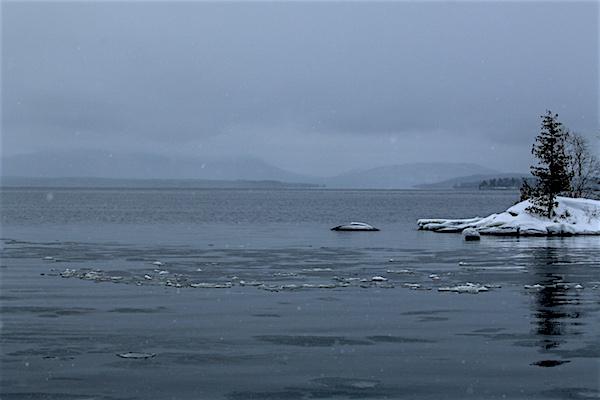
Moosehead Lake, located in the North Woods, is part of the Kennebec Lake headwaters system./Erika Zambello
Moreover, “We’re going to put together a fundraising team, and that’s going to be a big effort of the foundation over the next few years…to put together a plan and think about how we’re going to raise that money," he said. "It’s going to be a heavy lift, but you know the nice thing about it is that there’s a lot of people that care really passionately about the national parks and so we’ll be able to really dig in and try to get it done as quickly as we can.”
There are additional benefits to the fundraising campaign, especially from a communication perspective. “In trying to raise the funding,” he explained, “we’ll be able to bring people up to the landscape and show them the resource, and that’s one of my favorite things to do.”
The Katahdin Woods and Waters National Monument has a long history of human-environment interaction, from the Native Americans to Henry David Thoreau to the conservation movement in general, St. Clair noted, going on to talk about the beauty of the watershed and the East Branch of the Penobscot River, of the giant Atlantic Salmon that were found in the remote parts of the forest.
“It’s an incredibly beautiful place that has its own heartbeat in a lot of ways,” he added, including “bringing the energy from the ocean all the way up into the forest.”
I agree. I had an amazing experience on the lands now designated as a national monument, But now I wonder: what will happen to the rest of the North Woods?
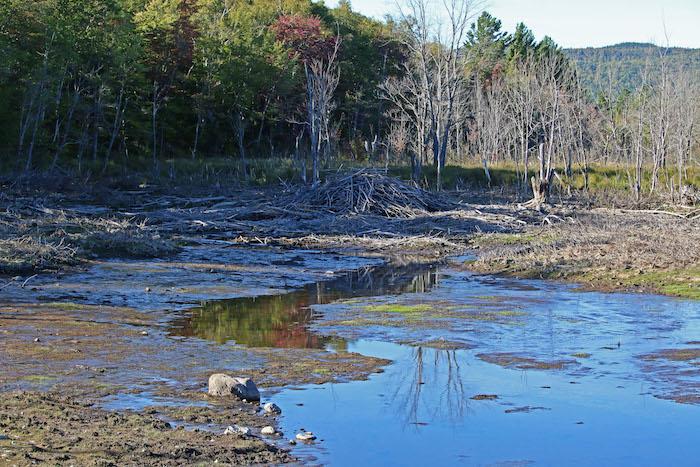
Beavers are only some of the many species of wildlife visitors can spot in the new monument/Erika Zambello
Throughout my expeditions, I visited the headwaters of the Penobscot River, the Kennebec River, the Saint John River, the Allagash River, and the Aroostook River. I saw moose, fox, birds, fish; I discovered colorful wildflowers and huge hemlock trees; but I also realized that the North Woods are not “pristine,” but working forests, both today and in centuries past.
As Pohlmann continued in her statement, “the Katahdin Woods and Waters National Monument will be protected for the ages as a place where visitors can sit along the pristine shores of the East Branch of the Penobscot River, camp under the dark skies of Maine’s North Woods, watch the sun set behind majestic Mount Katahdin, learn about the region’s history, and explore the area’s woods and waters in hopes of seeing a moose, loon, or Bald Eagle.”
But my question remains, what about the rest of the Maine North Woods? How can we preserve the resiliency of the region?
These are questions that must be answered in the future, and it is my hope that by trips into the new national monument, Mainers and visitors alike will fall in love with the North Woods as a whole, as I did, and support sustainable forestry and conservation initiatives.
Erika Zambello is a writer, birder, photographer, and National Geographic Young Explorer living and working along the Emerald Coast of Florida. She has a master’s degree in environmental management from Duke University, specializing in ecosystem science and conservation. Erika believes in the power of communicating conservation, and she has written for BirdWatching Daily, 10000birds.com, the Conservation Fund, Triangle Land Conservancy, the Maine Sportsman, and more. You can follow her adventures on zambellophotography.com or on Instagram at @a_day_in_the_landscape.

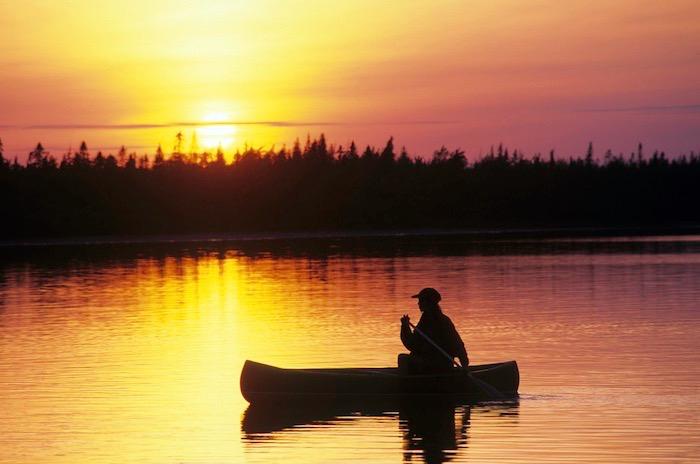
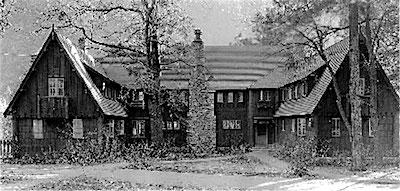
Comments
Having spent much time in Maine's North Woods, both along the Appalachian Trail and in Baxter State Park, we are glad to see so much of it now federally protected, through the new Katahdin Woods and Waters National Monument. We've also been following the efforts to establish the monument with great interest because of the similarities we've seen in Acadia's founding, as we blogged about here: http://acadiaonmymind.com/2016/08/ties-that-bind-acadia-new-maine-woods-...
My bet - the area will see far more development the next 50 years than the last.
EC, You are probably right that there will be more development in the future. That can be OK, or even a good thing if it is in the right place, such as in or around existing communities. But significant lands and waters, such as Moosehead Lake; the Allagash, West Branch Penobscot, Aroostook, and Kennebec corrodors; and the 100 Mile Wilderness region along the Appalachian Trail should not be developed and still need permanet protection.
The people her dont want this nice over reach of the governmet Thanks Obummer way to nopt listen to the people nice way to save swamp land and waste land . Hey want to save maine stop wind power from blasting off our mountains and killing the bats and raptors the filling of the wet lands the clear cuts help save Maine from the out of state wind bandits
I wouldn't try to argue with a literate spokesman like that.
I have seen all that without a NM or NP. And still in other areas that are not a NM can still see it.
Thank you, President Obama, for following the will of the voters in Maine's Second Congressional District by designating this newest national monument and thank you, National Parks Traveler, for the fine reporting. You make me proud to be an American. Having previously visited Baxter State Park, I now have another reason to return to Maine with my children to visit Katahdin Woods and Waters National Monument.
"now have another reason to return"
Why do you have any more reason now than before?